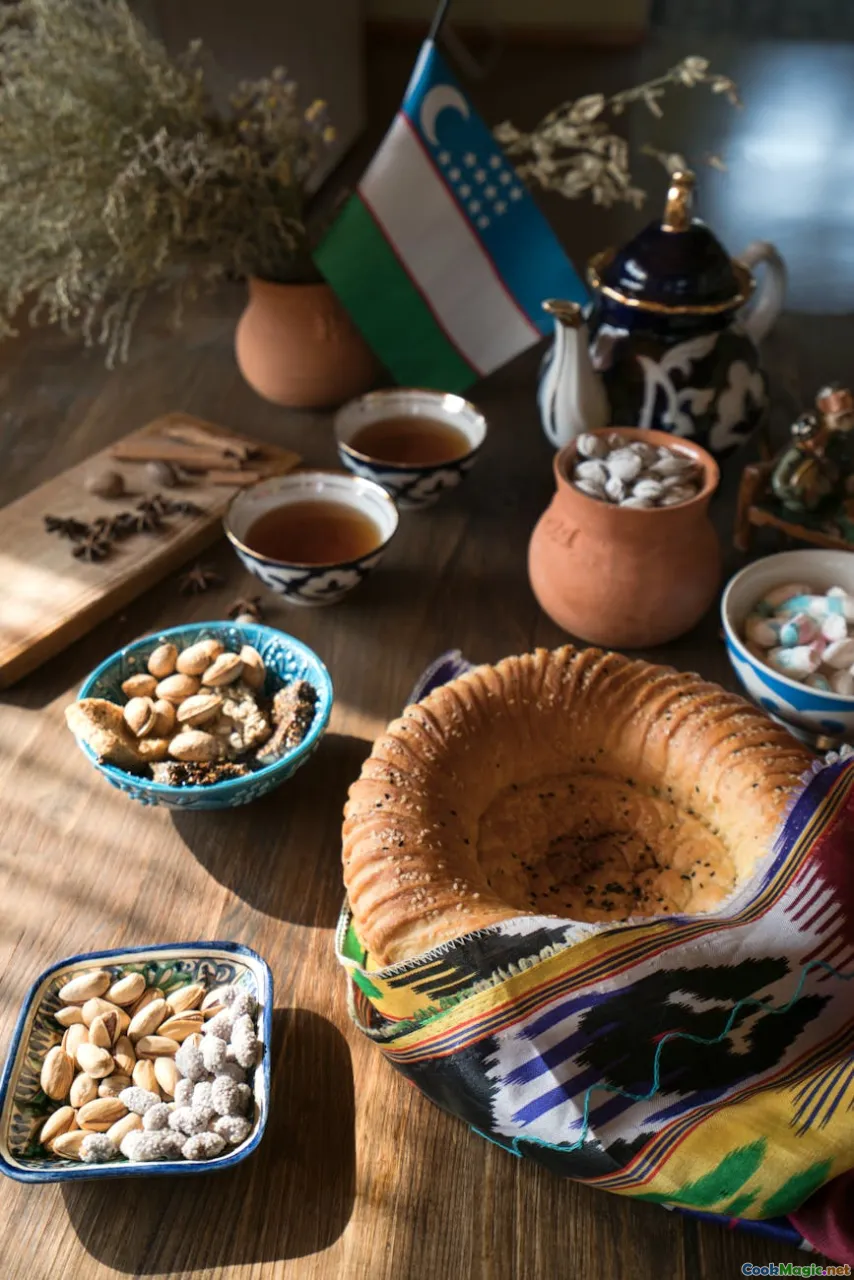Celebrating Uzbek Culture Through Food
7 min read Discover how Uzbek food embodies centuries of history, culture, and community, offering a flavorful journey into the heart of Central Asia. May 16, 2025 06:00
Celebrating Uzbek Culture Through Food
Imagine a land where the aroma of freshly baked bread mingles with the smoky scent of grilled meats, where vibrant spices tell stories of ancient trade routes, and where every dish is a testament to centuries of tradition. Welcome to Uzbekistan—a country whose culinary landscape is as rich and diverse as its history. Food in Uzbekistan is more than sustenance; it is a vibrant expression of identity, community, and cultural resilience.
An Introduction: The Heartbeat of Uzbek Culture
Uzbek cuisine is a living tapestry woven from the threads of Silk Road history, nomadic traditions, and the grandeur of imperial empires. It’s a cuisine that invites you to taste the sands of the desert, the freshness of mountain herbs, and the sweetness of fruit-laden desserts. But more than the ingredients or recipes, it’s the stories, rituals, and social bonds that make Uzbek food a celebration of life itself.
Historical Roots and Cultural Significance
The Silk Road and Culinary Crossroads
Uzbekistan’s geographical position at the crossroads of Asia and Europe has made its cuisine a melting pot of influences. Traders, conquerors, and travelers passing along the legendary Silk Road brought spices, techniques, and culinary ideas that melded into a unique local flavor. Dishes like plov (pilaf), samsa (savory pastries), and shashlik (skewered grilled meat) bear traces of Persian, Turkic, Chinese, and Russian culinary traditions.
Nomadic Heritage and Food Preservation
The nomadic peoples of Central Asia have historically relied on portable, hearty foods—dried meats, fermented dairy, and bread that can withstand long journeys. These traditions persist today, infusing Uzbek dishes with a rustic authenticity and resilience.
The Sensory World of Uzbek Food
The Art of Making Plov
At the core of Uzbek culinary identity is plov, a fragrant rice dish infused with tender chunks of lamb or beef, carrots, onions, and a medley of spices. The magic lies in the cooking technique—a deep, heavy-bottomed kazan (cauldron) is heated over an open flame, allowing the rice to absorb the savory juices and spices. The aroma of cumin, garlic, and freshly ground black pepper wafts through the air, awakening the senses.
Aromatic Breads and Pastries
No meal in Uzbekistan is complete without non—a round, flatbread baked in tandoors that impart a smoky flavor and a crispy crust. The samsa, filled with minced meat or pumpkin, boasts flaky layers and a spicy, aromatic filling that melts in your mouth.
The Sweet Side of Uzbekistan
Desserts like pakhlava (baklava) layered with honey and nuts, or sorpa—a thick fruit compote—offer a sweet counterpoint to savory dishes. The use of dried fruits, nuts, and fragrant spices like cardamom creates a symphony of flavors that evoke warmth and hospitality.
Traditional Food as a Social Fabric
Celebrations and Feasts
Uzbek culture places enormous importance on communal eating. Celebrations such as Navruz (Persian New Year) feature grand feasts centered around plov, symbolizing prosperity and unity. Families gather around large tables, sharing food that has been prepared with care and love.
Rituals and Hospitality
Offering food is a gesture of hospitality and respect. Guests are often welcomed with a cup of chai (tea) accompanied by sweets or bread. Serving non and samsa is a sign of warmth and friendship, emphasizing the communal spirit that underpins Uzbek society.
Personal Reflections and Experiences
Having traveled across Uzbekistan, I have tasted plov in bustling bazaars, enjoyed shashlik under starlit skies in ancient towns like Bukhara, and watched women expertly knead dough for non. Each experience deepened my appreciation for how food is intertwined with history and identity.
One memorable evening was in a small village near Samarkand, where an elderly woman shared her family’s secret recipe for samsa. As she folded the dough with practiced precision, her stories of generations past filled the air—each bite a delicious link to her ancestors.
Preserving and Promoting Uzbek Culinary Heritage
Today, chefs and food enthusiasts worldwide are embracing Uzbek cuisine, bringing its flavors to new audiences. Culinary festivals, cooking classes, and food documentaries highlight its diversity and depth. However, preserving traditional recipes and techniques remains vital to ensuring that this cultural treasure endures.
How to Experience Uzbek Food at Home
- Use authentic spices: cumin, coriander, black pepper, and sumac.
- Try your hand at plov: use long-grain rice and a good quality lamb or beef.
- Bake in a tandoor or mimic the effect: use a hot oven with a pizza stone for rustic bread.
- Incorporate dried fruits and nuts into desserts for that signature Uzbek sweetness.
Conclusion: A Culinary Journey of Heart and Heritage
Celebrating Uzbek culture through food is an invitation to explore a rich history, a resilient community, and a vibrant tapestry of flavors. Every dish tells a story—of ancient trade routes, nomadic traditions, and a warm hospitality that welcomes all. As you savor the aromatic plov, crispy non, or sweet pakhlava, you partake in a cultural celebration that spans centuries, uniting past and present in a delicious symphony.
So, next time you gather around a table filled with diverse dishes, remember—you’re not just eating; you’re experiencing the soul of Uzbekistan, a land where food is a universal language of love, tradition, and celebration.









